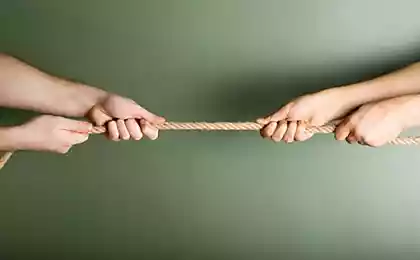199
How to stop feeling like a bad person if you upset someone
We all upset someone from time to time. In such moments, it is easy to plunge into self-flagellation and begin to feel like a bad person. However, this path rarely leads to relationship healing or personal growth. This article reveals the psychological mechanisms of guilt and offers practical strategies for healthy emotional management after conflict.

Psychology of self-condemnation: Why are we so hard on ourselves?
When we upset another person, our brain automatically triggers a whole cascading response. There is an activation of the limbic system, especially the amygdala, which causes a stress reaction and a feeling of anxiety. At the same time, the prefrontal cortex begins to analyze the situation, often with an attitude of self-criticism.
Interesting fact: According to Stanford University research, self-criticism activates the same areas of the brain as physical pain. Our bodies literally perceive self-condemnation as a form of punishment.
Evolutionary psychologists suggest that guilt has evolved as a mechanism for maintaining social bonds. In primitive society, expulsion from the group meant almost certain death. Therefore, our brains are programmed to react strongly when social norms are violated to motivate us to reconnect.
However, the problem with modern man is that this system sometimes works too much. We can experience toxic guilt even in situations where we are not objectively responsible for what happened.
The difference between healthy remorse and toxic self-blame
Healthy remorse focuses on a specific action and motivates behavior change. Toxic self-blame is directed at one’s whole personality and causes paralyzing shame, which rarely leads to positive change.
When we say to ourselves, “I made a mistake” instead of “I am a mistake,” we create space for growth and correction. The first formulation recognizes a specific action that can be changed, the second labels the whole person, forming the belief that it is impossible to change.
Seven Effective Techniques for Overcoming Guilt and Self-Blame
- Practice of cognitive reassessment
This method, widely used in cognitive behavioral therapy, involves a conscious rethinking of the situation. If you’ve upset someone, ask yourself, “Did I really want to hurt you?” What factors have influenced my behavior? How would I rate a friend in a similar situation? ?
Studies show that cognitive reassessment helps reduce emotional reactivity and reduce the intensity of negative experiences by 30-40%. - Letter of self-forgiveness
Write yourself a letter on behalf of a wise, compassionate friend. In it, describe the situation objectively, acknowledge your feelings without judgment and suggest constructive steps to correct the situation. This exercise helps to incorporate a “third person” into your inner speech, creating a psychological distance from the immediate experience. - The "Temporary Perspective" technique
Imagine how you will perceive this situation in a week, a month, a year or even ten years. Most conflicts lose their urgency in this perspective. This technique helps activate the prefrontal cortex, which is responsible for rational thinking, reducing the activity of emotional centers.

- Specific actions to remedy the situation
Convert the energy of guilt into constructive action. A sincere apology, an acknowledgement of harm, and an offer of compensation help not only restore relationships, but also restore self-esteem. Psychologists recommend an effective apology structure:- Recognition of a specific act without vague wording
- Expressing an understanding of how it caused the other person to feel
- Explaining (but not justifying) your behavior
- A clear plan on how to avoid a repeat of the situation
- Offering compensation, if appropriate
- Practice Mindfulness and Self-Compassion
Mindfulness meditations help you observe your thoughts and feelings without identifying with them. Studies show that regular practice of mindfulness reduces the activity of the default system of the brain responsible for rumination (obsessive negative thoughts).
Self-compassion includes three components: kindness to oneself instead of self-criticism, awareness of the universal nature of suffering (“everyone makes mistakes”), and attentiveness to one’s experiences. - Establishing healthy boundaries
Sometimes feelings of guilt are exacerbated by another person’s inappropriate response. Healthy boundaries help separate responsibility for one’s actions from excessive responsibility for the feelings of others. If a person is constantly blaming you or using your mistake to manipulate you, you need to realize that this goes beyond constructive conflict resolution. - Therapeutic care for chronic self-blame
If feelings of guilt have been haunting you for a long time, despite all the corrective measures taken, perhaps the roots of the problem lie deeper. Chronic self-blame can be associated with childhood trauma, low self-esteem, or depression. In such cases, working with a qualified therapist may be a necessary step in restoring healthy relationships with oneself and others.
In some situations, we take excessive responsibility for the feelings of others. Psychologists call this phenomenon “emotional fusion” – the inability to separate their emotions from those around them.
Signs of toxic liability:
- You feel responsible for the mood of others.
- You often apologize for little things or situations where you are not guilty.
- You are afraid to speak out for fear of upsetting others.
- You feel exhausted from constantly trying to make everyone happy.
- You ignore your needs in favor of the wishes of others.
It’s important to remember that other people’s emotional reactions are shaped by many factors: their personal experiences, beliefs, current state, and context. We can be attentive to the feelings of others, but we cannot fully control their emotional reactions.
Circles of Responsibility
The Circles of Responsibility method is an effective tool for determining healthy boundaries of responsibility. Imagine three concentric circles:
- The inner circle: completely in your power (your thoughts, decisions, behavior)
- Middle circlePartial influence zone (your words and actions may affect, but do not fully determine, the outcome)
- The outer circleOut of your control (thoughts, decisions, emotional reactions)
Reconstruction of relations after the conflict
Studies show that conflicts resolved constructively can even strengthen relationships. See painful situations as an opportunity to better understand each other and develop relationships.

Once the initial strong emotions subside, you can use the Three Perspectives method to analyze the situation.
- My perspective.How I saw the situation, how I felt what I wanted
- His/her perspectiveHow the other person could perceive what was happening
- Observer perspectiveWhat the situation would look like from a disinterested person
From self-incrimination to self-discovery
Paradoxically, the painful experience of hurting others can be a valuable source of self-discovery. Instead of endlessly replaying the same self-blame in your head, try asking yourself deep questions:
- What needs were not met in that situation?
- What values have come into conflict?
- What unconscious beliefs or attitudes have influenced my behavior?
- What does this experience tell me about my weaknesses?
- What qualities would I like to develop so that such situations do not happen again?
The transformation of guilt into conscious self-knowledge turns a painful experience into a stepping stone for personal growth. Sociologist Charles Cooley proposed the concept of the “mirror self” – we form an idea of ourselves through reflection in the reactions of other people. Conflict situations often expose aspects of our personality that go unnoticed in everyday life.
Conclusion: The Path to Emotional Maturity
The ability to cope with feelings of guilt after conflicts is an important indicator of emotional maturity. This skill does not come automatically, but develops through conscious practice and experience. Every situation that upsets someone can be either an occasion for protracted self-blame or an opportunity for deep self-discovery and stronger relationships.
Using the techniques described above, remember that being a good person does not mean never upsetting anyone. This means taking responsibility for your actions, learning from mistakes, and striving for greater awareness in your relationships with yourself and others.
Glossary
Cognitive reassessment
A psychological strategy that allows you to change the emotional response to an event by rethinking the situation or changing its interpretation.
Rumination
Obsessively scrolling through negative thoughts, events, or problems in the head without moving toward solving them.
Self-compassion
The ability to treat oneself with kindness and understanding in moments of suffering or failure, recognizing one’s humanity and imperfection.
Emotional fusion
A psychological state in which a person is unable to separate his emotions from those of others, which leads to the blurring of personal boundaries.
Toxic guilt
Irrational and maladaptive feelings of guilt that do not correspond to the real degree of responsibility of the person for what happened.
limbic system
The complex of brain structures involved in the regulation of emotions, memory and autonomic functions of the body.
Brain failure
A network of interconnected brain regions that are active when a person is not focused on the outside world, but is immersed in thinking, remembering, or planning.























